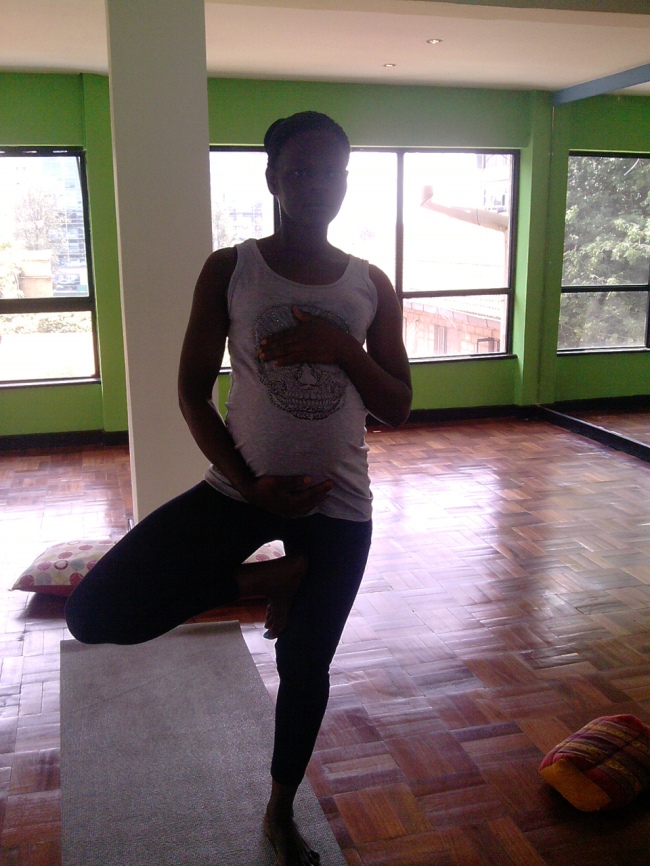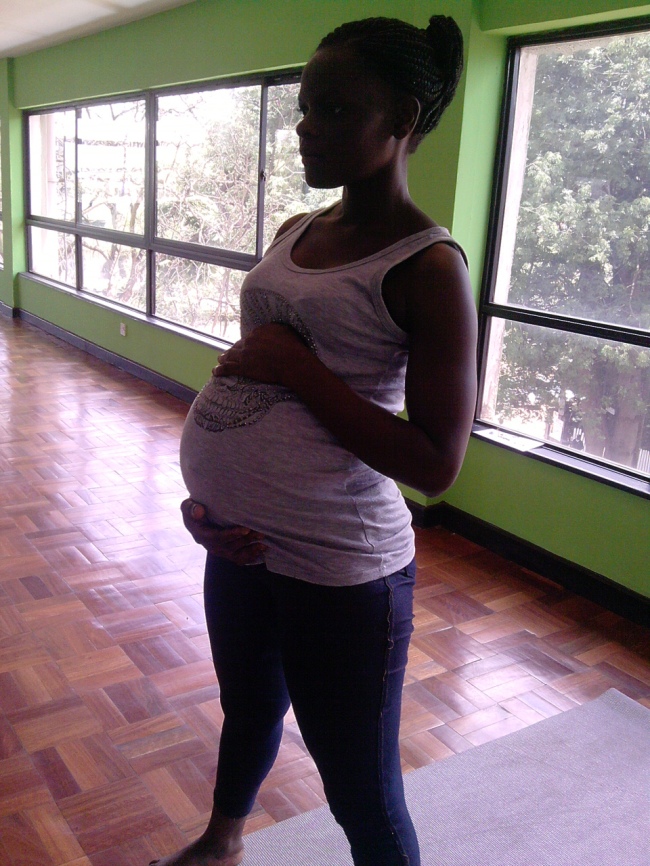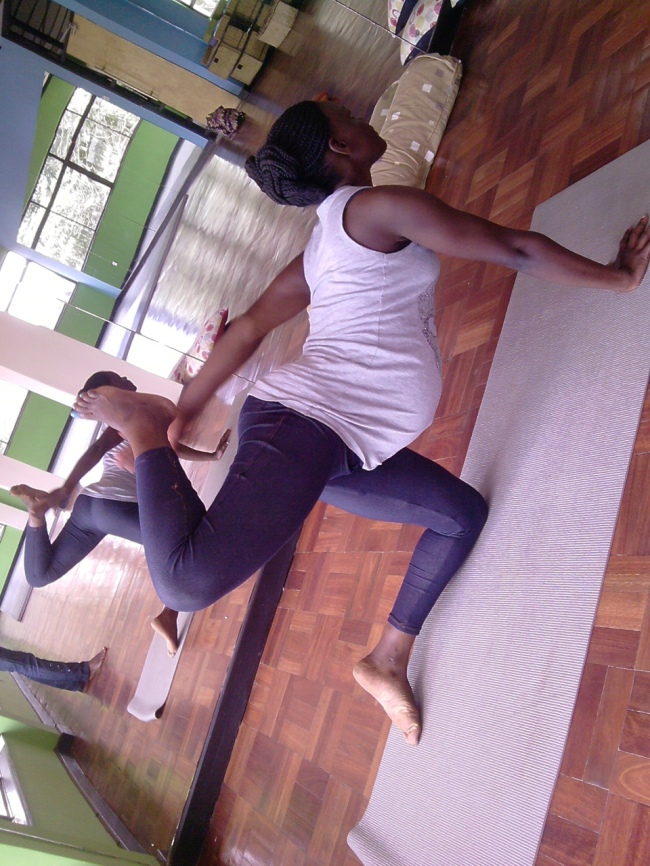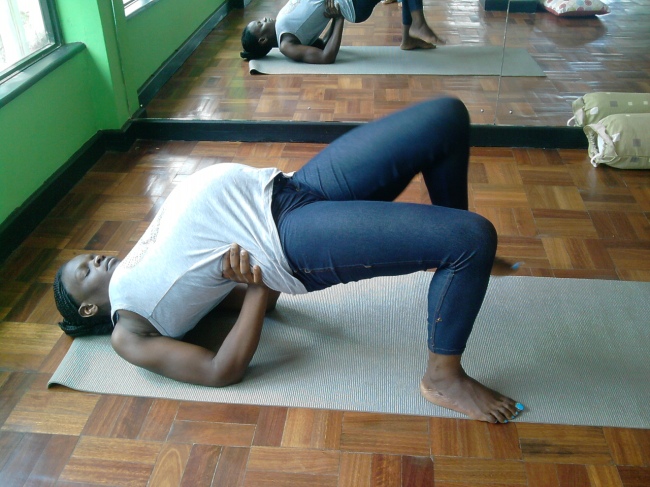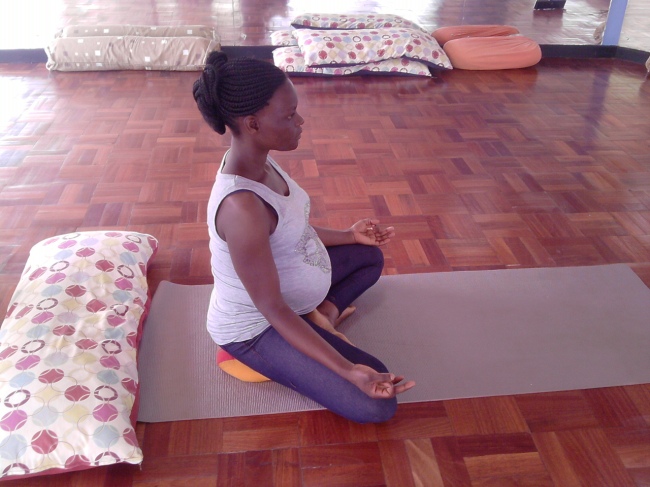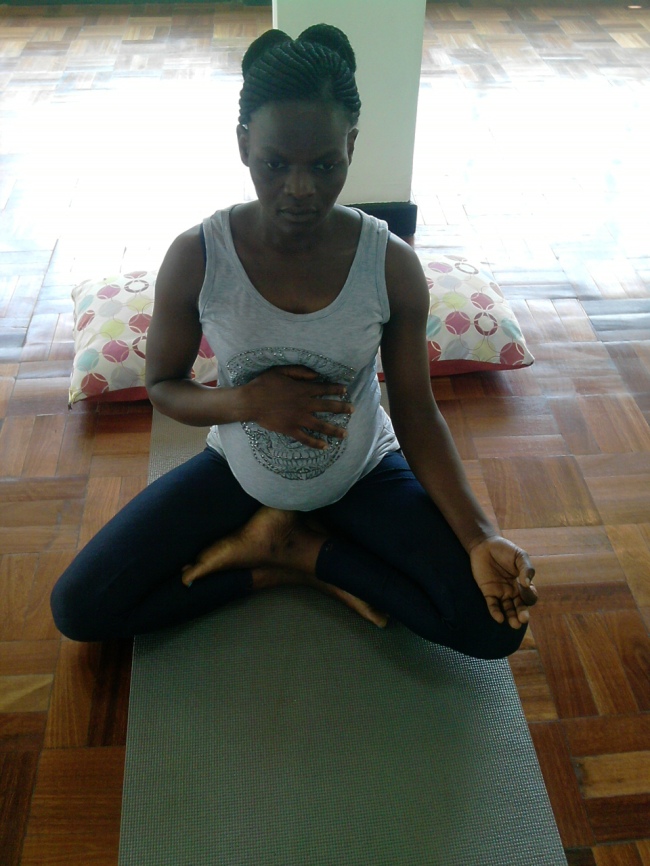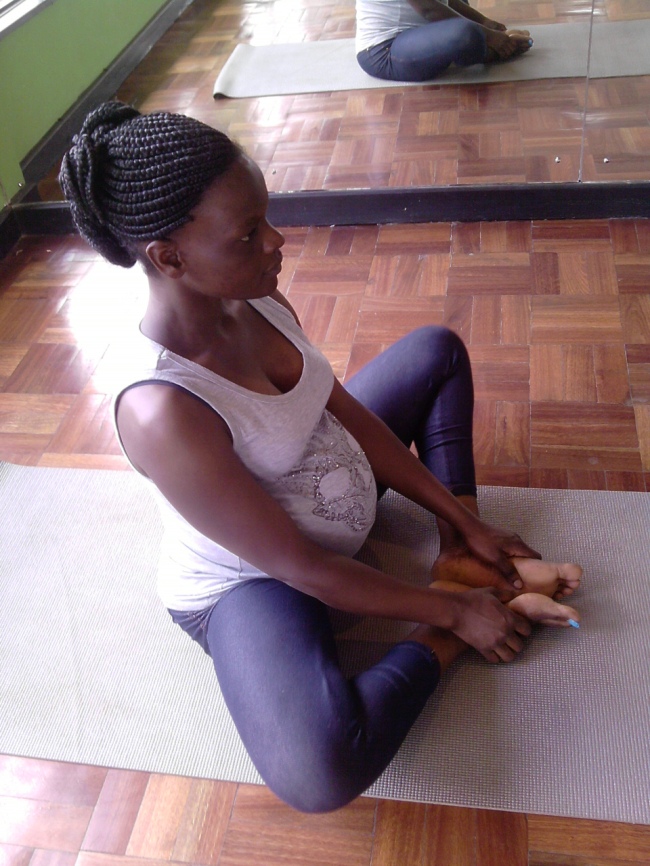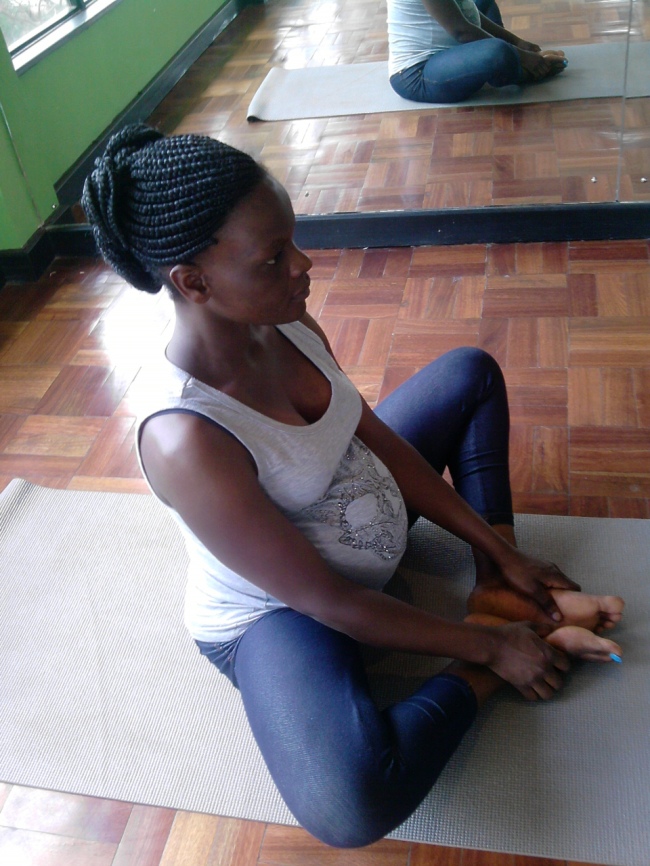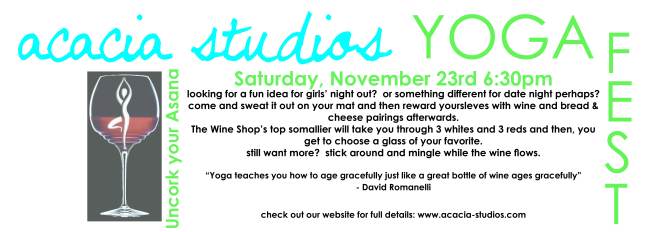Practice Of A Lifetime

One of the beauties of the physical practice of yoga is that the poses support and sustain you no matter how you come to your mat—good day or bad, through any number of physical, emotional, and circumstantial changes. And when you approach it with care, attention, and self-compassion, your practice will grow and evolve with you over the course of your lifetime. “As you age, your understanding of asana becomes more sophisticated. You move from working on the external alignment and mechanics of the pose to refining the inner actions to finally just being in the asana,” says Iyengar Yoga teacher Marla Apt. “Ultimately, your years of practice and familiarity with each asana allow the poses to serve you at the times when you need them the most.”
One can benefit from the practice when beginning at any stage of life, says Apt, who has taught for more than 20 years and is certified at the intermediate senior level in the Iyengar Yoga system. Beginning at a younger age, she says, means that you can develop a larger repertoire of techniques that will be available to you when you’re older. But as you age, she says, “you are more sensitive to the changes in your body and therefore can appreciate the benefits of yoga in a more immediate sense.”
Apt teaches her students how to use the postures of yoga to embrace and support their stage in life. For example, what she emphasizes for teenage and young-adult practitioners (celebrate your range of motion, build strength and confidence, don’t think too hard, go upside down) may be different from what she tells her 30- to 40-something students (focus on forward bends, improve flexibility, don’t be afraid to use props). Here, Apt shows how you can adapt one essential yoga sequence through multiple decades so that your practice remains a constant, even as the poses take on new expressions and emphases and offer new lessons about your body and your life.
Strong Start: 20s and 30s
Your 20s and 30s are foundation-building years. At this stage of life, you may have lots of goals for your life and your practice—and you have the energy, strength, and passion to pursue them. Apt advises using that energy and passion to lay the groundwork for a solid yoga practice, so it will sustain you throughout your life and help you maintain a high level of energy and activity. In particular, Apt recommends learning inversions and making them a regular part of your practice during these decades when it feels like anything is possible. “You may be too intimidated or too weak to learn them later in life,” she says. But take care that your strength and feelings of invincibility don’t lead you to muscle though big poses like backbends. “If your shoulders and pelvic area aren’t open, you’ll put pressure on your spine, which can strain your back,” Apt says. Using props to help open the chest and front pelvis will keep backbends accessible to you as you age.
This is also a great time to notice and change unhealthy patterns before they solidify and potentially cause damage. Apt says to pay particular attention to your posture: Does your chest collapse? Are your shoulders stiff and rolling forward? Are you even on both sides of your body? Use your practice to stretch and open the shoulders and upper body. It will improve your posture and let you breathe more deeply—a bonus for dealing with the stress and anxiety common in these decades of big life changes.
Looking Inward: 40s and 50s
As the flurry of building a life in your 20s and 30s gives way to a more settled feeling in your 40s and 50s, the unbridled energy and enthusiasm of your younger years may morph into an energy that’s more steady and reflective.
While change may come gradually to your physical practice, in these years you may begin to notice physical changes such as a slower metabolism, stiffer joints, and a longer recovery time after injury. If you haven’t already developed a more introspective, inward-looking practice, these changes may encourage one. Embrace the opportunity to continue developing a thoughtful, refined approach to your practice, urges Apt. She recommends practicing inversions for longer periods of time and using props to help decrease weight or pressure on some areas while working to open others—for example, placing your back against the wall in Ardha Chandrasana (Half Moon Pose), which lessens the weight on your standing leg so that you can work on opening the front of the pelvis and chest and extending through the top leg to make space in the lower back.
Pay close attention to your energy levels, and don’t overstrain yourself, Apt advises. On low-energy days, give yourself permission to do standing poses with your back against a wall or to hold poses for a shorter period of time and repeat them rather than straining in longer holds.
Being in Balance: 60s and Beyond
For many people, life’s responsibilities may be easing up. You may be retired. Your children, if you have them, are probably adults. You may be enjoying grandchildren, traveling more, or concentrating on hobbies. If you’re in overall good health, you may notice physical changes like stiffness, slightly higher blood pressure, insomnia, and shakier balance.
During these decades it’s important to maintain your range of motion and agility, especially in the spine, says Apt. That’s why backbends are so important. “Backbends counteract the bent-over posture of aging,” she says. They also energize, create space for internal organs, and boost mood. If you feel unsteady or fearful in backbends, props like chairs and bolsters can allow you to assume a backbend or an inversion so you can still reap the benefits.
You can also use a block or a wall to assist you in standing poses like Utthita Parsvakonasana (Extended Side Angle Pose) and Half Moon Pose, especially if your balance isn’t what it used to be. “Wall support allows you to hold the pose with less muscular effort and stay balanced while opening the groins, pelvis, and chest,” says Apt.
Draw on the wisdom and life experience you’ve accumulated thus far to create a practice that supports whatever physical changes may arise. For example, for high blood pressure, Apt suggests more forward bends. For insomnia, she recommends Salamba Sarvangasana (Supported Shoulderstand). And if you feel your energy, strength, or steadiness is lacking on a given day, reach for a prop. Useful at all ages and stages, props can help you maintain a well-rounded asana practice for life.
Mary Bolster is a freelance writer and editor in New York City.
Asana for the Ages
Imagine practicing the same sequence for a lifetime. We asked Marla Apt to suggest one set of poses you could do for decades, with modifications to honor the changes in energy and ability you’ll encounter at different times. Unlike most sequences you’ll find in Yoga Journal, it assumes you have a basic knowledge of the poses presented.
Utthita Parsvakonasana (Extended Side Angle Pose)

20s and 30s: Use your strength to create dynamism in this pose, and focus on the alignment of all your joints, keeping your hips, ankles, and knees in line with each other. Bend the front leg to 90 degrees and keep the inner back thigh lifted. Balance your weight evenly through your feet.
40s and 50s: If you feel stiff in this pose, come into and out of it several times rather than holding it. Or use a wall for support: Stand with your back outer heel against the wall, and maintain contact with the wall as you bend the front knee, take your hand to the floor or a block, and extend your top arm overhead. Think of your back heel and leg as an anchor that helps you open the front of your pelvis and chest toward the ceiling.
60s and Beyond: This strength-building pose helps maintain muscle mass and stability in your hips, sacrum, and lower back. Stand with your back against a wall if your balance is shaky. If it’s a strain to reach the floor, use a block under your hand to help open the chest and lift the torso.
Ardha Chandrasana (Half Moon Pose)

20s and 30s: Keep the uplifted leg straight and firm. Externally rotate your standing leg and pull up through the outer thigh. Move the outer hip of the standing leg toward the inner thigh to stabilize the pose. Then extend the uplifted leg and sides of the torso away from each other. Spread your arms, and lift the front of your pelvis, abdomen, and chest toward the ceiling while keeping your legs straight.
40s and 50s: This can be a tricky pose at any age. The support of a wall can help you focus on alignment and on increasing the opening of your chest rather than on struggling for balance. Place the foot of your standing leg a few inches from a wall, and put your uplifted foot, top shoulder, and arm against the wall. Press the back of your top thigh into the wall as you turn the front of your torso toward the ceiling.
60s and Beyond: Half Moon Pose builds strength in your knees, hips, and ankles, which helps with balance in everyday life. Use the wall if necessary. Place a block under your hand to take some weight off your standing knee, get more lift in the top leg, and elevate the torso away from the floor.
Adho Mukha Svanasana (Downward-Facing Dog Pose)

20s and 30s: Establishing a strong and well-aligned Downward-Facing Dog is crucial to a lifelong practice. This pose should feel so familiar and comfortable that it becomes a place to rest. Fully extend your arms and legs and rotate your upper arms outward. Extend your spine away from your head, and press the fronts of your thighs away from your torso as you move your chest toward your thighs. Release your head and neck down as you extend your heels toward the floor. Practice different hand variations, such as hands turned out (above), to open your shoulders and chest.
40s and 50s: If you feel fatigued, support your head on a bolster, folded blankets, or a block. Start on your hands and knees with the prop under your chest. After straightening your arms and legs, release your head toward the prop. If you have to bend your elbows to reach the prop, make the prop higher (add a blanket or block). If your neck feels crunched, make the prop lower. Your head and neck should descend and rest as you lift through your arms and torso and press back through your legs.
60s and Beyond: If you’re tired or weak, do Down Dog with your heels against a wall. You can also support your head. If you feel like your arms are collapsing or your shoulders are sinking, rest for a few breaths in Adho Mukha Virasana (Downward-Facing Hero Pose): Come into Virasana (Hero Pose) with big toes together and knees apart, then fold forward with your chest between your legs, extending the arms forward and resting the forehead on the floor. Finally, come back to Downward Dog with the arms and legs straight and firm.
Sirsasana (Headstand)

Note: Headstand should first be learned under the guidance of an experienced teacher.
20s and 30s:Inversions are crucial for equanimity and emotional balance. Establish a strong, regular Headstand practice in your 20s and 30s so that it remains solid into your 60s and beyond. Make sure your forearms, elbows, wrists, and head are placed evenly on the floor and your weight is balanced between both sides and front and back. You don’t want to tilt to one side or drop one shoulder. Keep the shoulders, shoulder blades, and trapezius lifted, so the neck remains long. The legs should be strong and straight, helping lift the spine.
40s and 50s: Inversions keep you balanced both mentally and physically. If you feel comfortable and steady, practice Headstand regularly.
60s and Beyond: If you need added stability, you can practice Headstand in a corner. If you can’t keep your shoulders lifted or if you have a strained neck, you can practice Prasarita Padottanasana (Wide-Legged Standing Forward Bend) as an alternative to get the benefit of being upside down without putting pressure on your head and neck.
Bharadvajasana I (Bharadvaja’s Twist)

20s and 30s: As you twist to the right, the left hip should be kept down. With your right hand, clasp your left upper arm behind your back and roll the shoulders back and down as you turn your head and chest. Lift your chest toward the ceiling from your upper back and shoulder blades. As you clasp, focus on opening your shoulders.
40s and 50s: Instead of clasping your arm behind your back, place your right hand on the floor or against a wall to help turn your chest more. This allows you to press down and lift your torso evenly on both sides so that there’s no compression in the spine.
60s and Beyond: If you have pain, stiffness, or swelling in your knees, feet, or ankles, sit sideways on a chair with your feet and knees hip-width apart and feet parallel and flat on the floor. Turn to face the backrest. Hold on to the back, and inhale and lift the sides of your chest. Exhale and turn away from your legs to get the full expression of the twist.
Urdhva Dhanurasana (Upward Bow Pose)

20s and 30s: To maintain the suppleness of your spine, don’t force backbends. Focus on opening the shoulders and chest and getting more lift in the pelvis by practicing Upward Bow Pose with the hands elevated on blocks (placed against a wall for support).
40s and 50s: If pushing up into this pose is a struggle, try pushing up from a chair. Lie backward through a chair with your feet flat on the floor. Place your hands on the floor or on blocks that are stabilized against a wall, and push up from the chair. Lift your pelvis and push the wall away with your arms to raise your torso and straighten your arms. Keep pressing away from the wall until your arms are straight. Then concentrate on opening your chest toward the wall and your pelvis toward the ceiling. To come out, lower yourself back to the seat of the chair, grasp the chair back, and lead with your chest to sit up.
60s and Beyond: If you have a strong backbend, lift into it with care. If not, warm up your back by lying over a bolster. Then, sit backward on a folding chair with two blocks against a wall at your feet. Open your chest and lie back over the seat. Slide off the chair, and extend your legs with your heels on the blocks. Pull the sides of the chair to lift and open your chest. Extend arms overhead and reach between the front legs of the chair to hold the back legs. If you feel strain in the neck or pressure in your head, come out and place a block or bolster to support the head. To come out, place feet on the floor, grasp the chair back, and slide to the center of the seat. Pull yourself up to sitting, leading with the chest.
Salamba Sarvangasana (Supported Shoulderstand)

20s and 30s: Solidify this foundational pose, so you can rely on it into your 60s and beyond. Be sure you’re resting directly on the top outer corners of your shoulders and that your entire back body is lifting up from the floor. Bring in your elbows and rotate your upper arms out. Lift the side body and the front of your thighs.
40s and 50s: If you feel rundown on certain days, skip the standing poses and focus more on inversions, especially Shoulderstand (as shown left), for a shot of energy, spending at least 10 minutes inverted. If you’re too tired to hold Shoulderstand, do it for a few minutes and then transition into Halasana (Plow Pose) with your legs resting on a chair (as shown above). To come out, roll out of the pose onto your back.
60s and Beyond: If your chest collapses in Shoulderstand or you can’t maintain strong legs, use a chair. Place a blanket on the seat and two folded blankets on the floor in front of the chair. Sit backward on the chair with your feet over the backrest, and lie back. Hold the sides of the chair and slide down until your shoulders reach the blankets and your head reaches the floor. Reach between the front legs of the chair to hold the back legs, and raise your legs toward the ceiling. Rotate your upper arms out, press the outer shoulders down, and lift the sides of your chest. To come out, bend your knees, release your hands, and slide off the seat.
Janu Sirsasana (Head-to-Knee Pose)

20s and 30s: This forward bend helps stretch the hips, legs, and back. The key is to develop evenness on both sides of the back. Rotate the bent-leg side of your torso forward and toward the floor. Focus on lengthening your torso forward rather than reaching your head to your shin. Keep the extended leg straight and press it down into the floor while keeping the bent knee back and down. To finish the sequence, take Savasana (Corpse Pose).
40s and 50s: If you need to, you can support your head on a blanket, bolster, or the seat of a chair. Finish the sequence by taking Savasana.
60s and Beyond: If you have tight hamstrings or if arthritis has given you stiff hips or knees, elevate your hips by sitting on blankets or a bolster, so the bent knee descends toward the floor. If your knees are stiff, you can place a strap or a thin roll behind the back of the bent knee, between the thigh and the calf. If you need to, you can support your head on a blanket or bolster. Finish the sequence by taking Savasana.
November 2012
Reference:


